
This year, Dokk1 Library in Aarhus, Denmark asked us to facilitate an informal learning space at their Next Library conference. Dokk1 was looking to create a new type of space that sat alongside the more structured conference elements like keynotes, sessions, and ignite talks. They were looking for, in their words, a space where “participants can create, play, share knowledge and learn together through multiple self-paced activities. This is an opportunity for the participants to form long-lasting relationships around mutual goals and interests.”
We were excited about this opportunity to apply the values of learning circles to a new environment. Similar to learning circles, our goal was to seed the room with just enough of a framework as to allow the participants to co-create a shared space. If we did too little prep work, people would come into the space and be bored or confused. However, if we over-programmed the space, we risked becoming just another conference session.
To cut to the chase, here’s a poor quality .gif of the Lab right after it opened:
Since our budget for this was 0 Danish Krone ($0 USD), we needed to rely on what the library already had in order to create a welcoming space for participants. We’re very grateful to the librarians who spent part of their weekend walking us through the sub-basement storage rooms of the library.

There were two things we knew we wanted right away: large polystyrene blocks that the library had made a while back for a children’s event, and nicely printed signs for each activity. I think these two elements really brought the space together. The large colorful blocks gave people permission to let down their guard a bit and adopt an openminded stance towards the activities. The signs reassured people that, yes, somebody had thought about all of this long enough to bother writing it down, so why not give it a go?
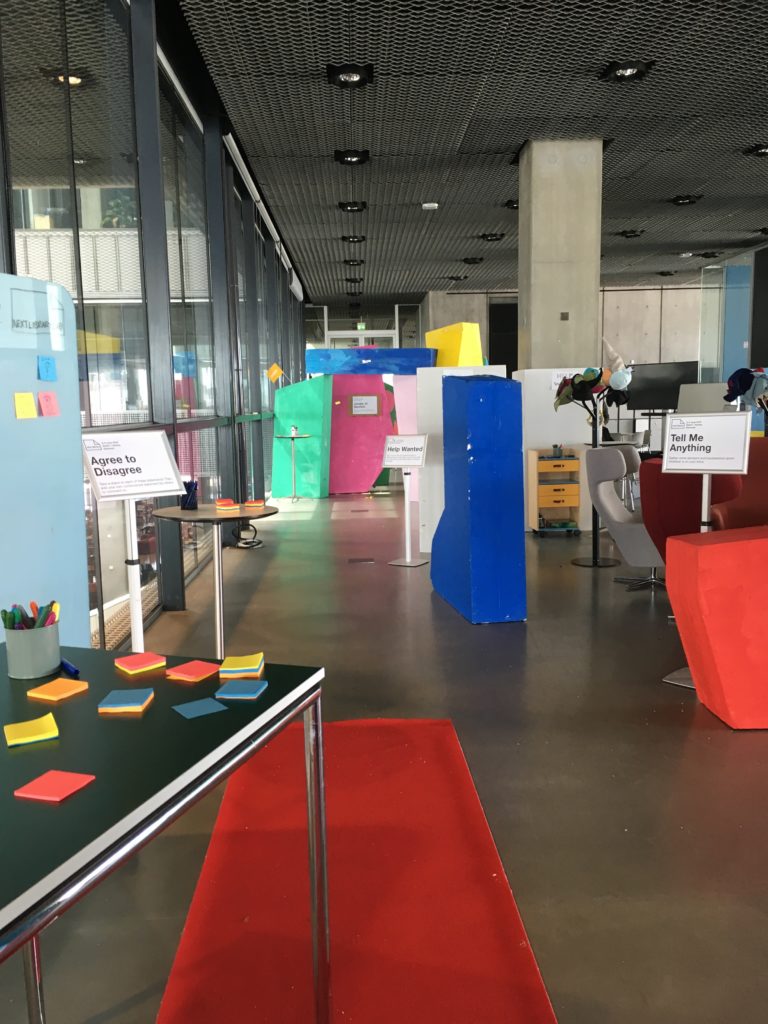
Most of the activities we developed were designed to be asynchronous, meaning that people could do them on their own whenever they wanted. However, we designed them such that every participant left a trail of activity behind them for future participants to find.
The first stop when you entered the room was a sticky note self portrait board, which became a natural space to stop and chat with whoever else was in the room with you.
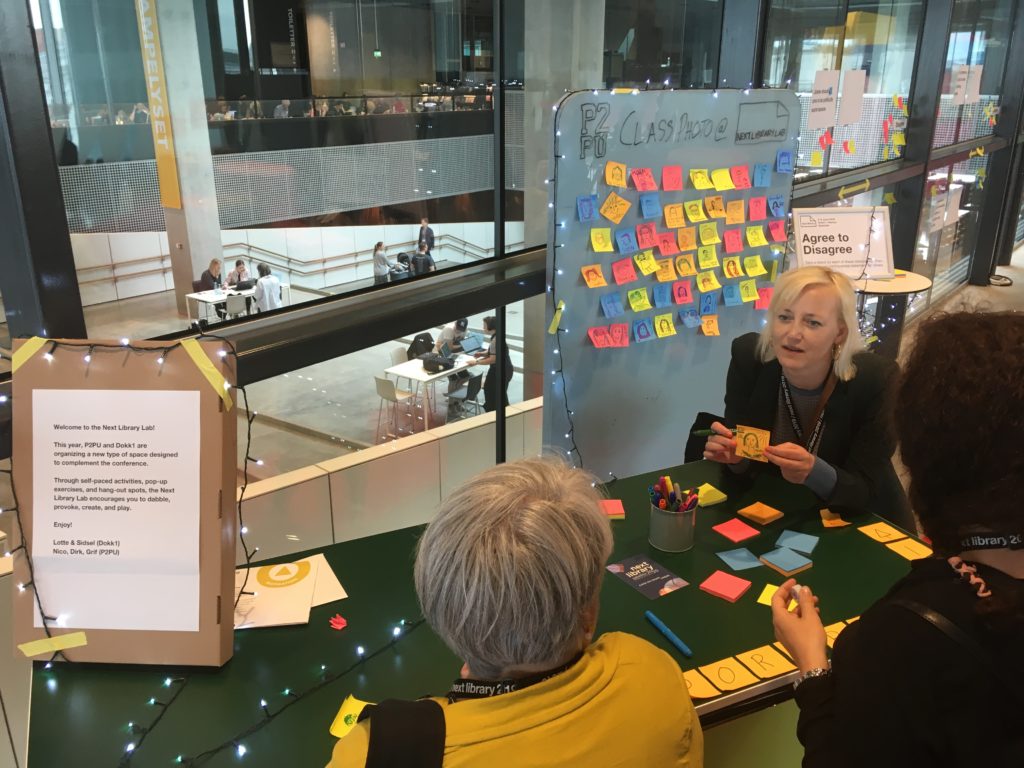
After that, participants were invited to consider a few provocative questions, and write their reflections on a spectrum from agree to disagree.

Next, we created a help wanted board, where conference participants could come to write down things they wanted help with and explore what other participants were looking for.

From there, participants entered the Jungle of Secrets, where people anonymously shared secrets for others to find.

The back of the room was designed as a popup space that people could use as they pleased. We put a whiteboard out front that allowed people to promote mini-events during the conference and announced the schedule each day after breakfast.
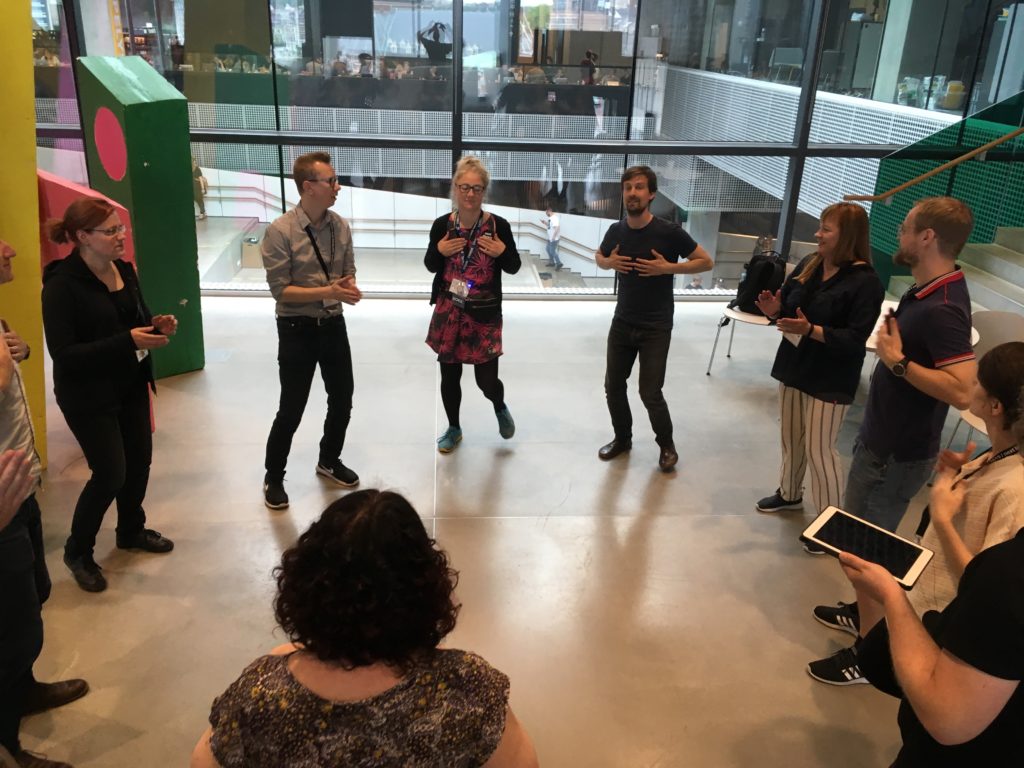
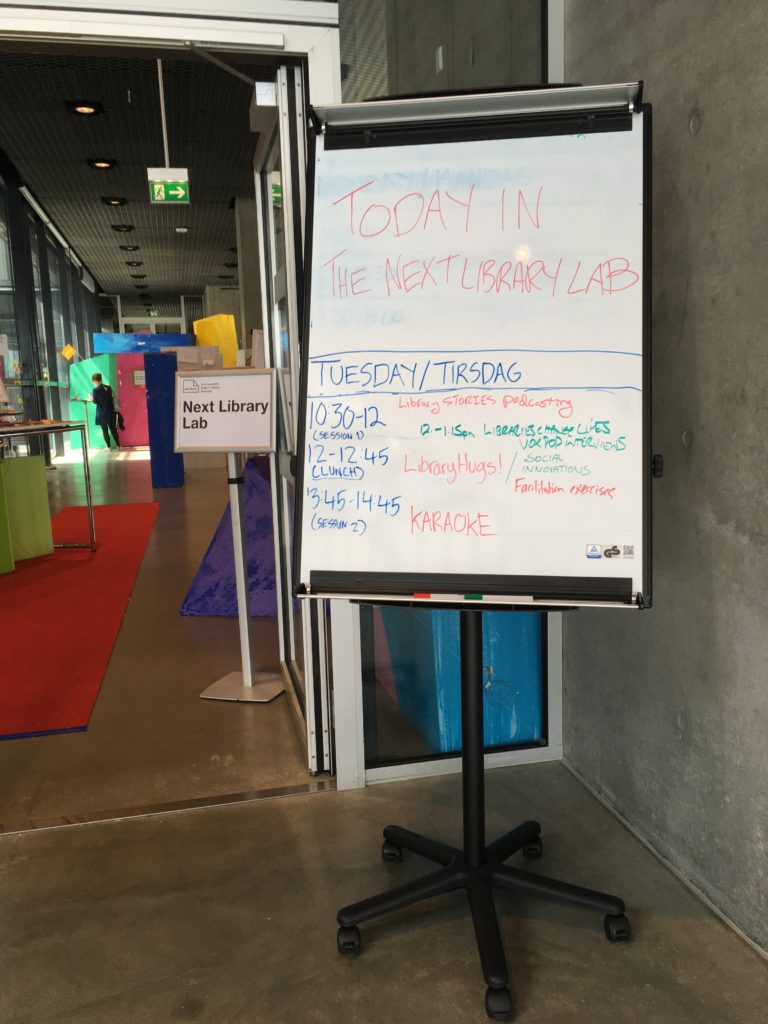
Along the righthand side of the room coming back towards the entrance, we put a large whiteboard which Dokk1 used to solicit feedback for the conference debrief session on Wednesday.

And after that we had two rooms dedicated to play and relaxation. The Teenage Sleepover Playroom was equipped with a stereo, games, and lots of maker activities, while the Relaxation Spa was dedicated as a place for people to come and unwind.

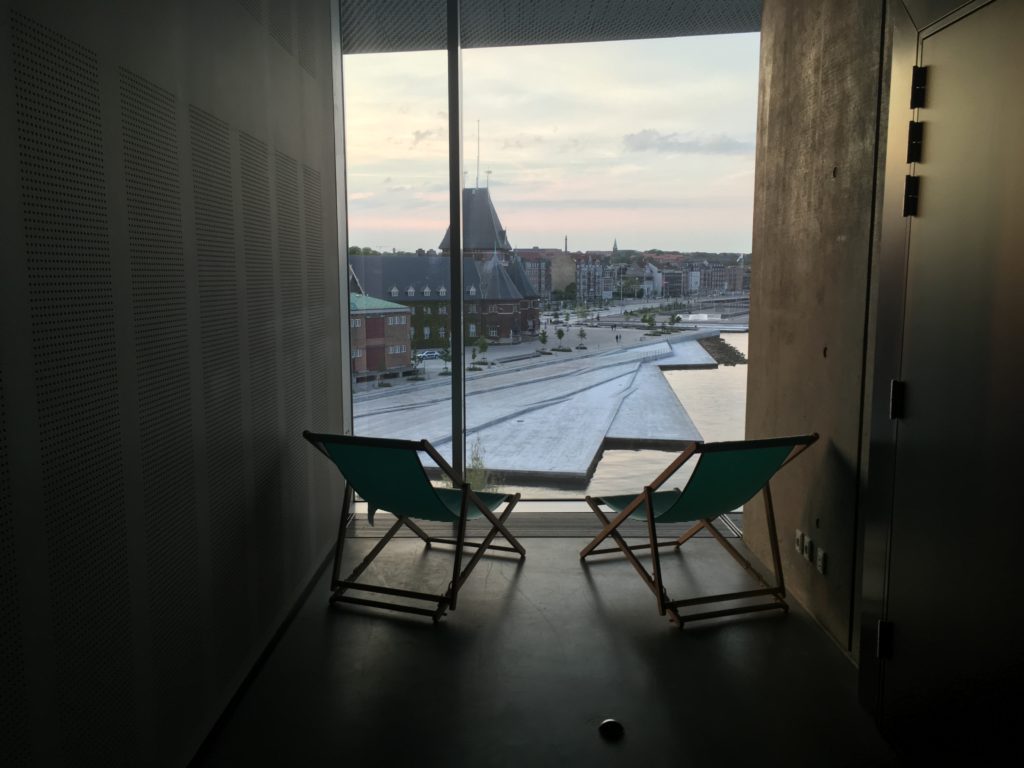
At the center of the room was a group activity called Tell Me Anything. Here, we assembled seven chairs in a circle, alongside two hat racks. Each hat had an identity written on it (e.g. The Shark wants to get down to business; The Mad Hatter is filled with new ideas). The idea here was that anybody could propose a discussion topic, and other people in the space could take on an identity by choosing a hat and then participate in the discussion.
Over the course of the conference, we had a variety of conversations on topics including “I’m nervous for my ignite talk” and “How can libraries support citizen journalism?”.
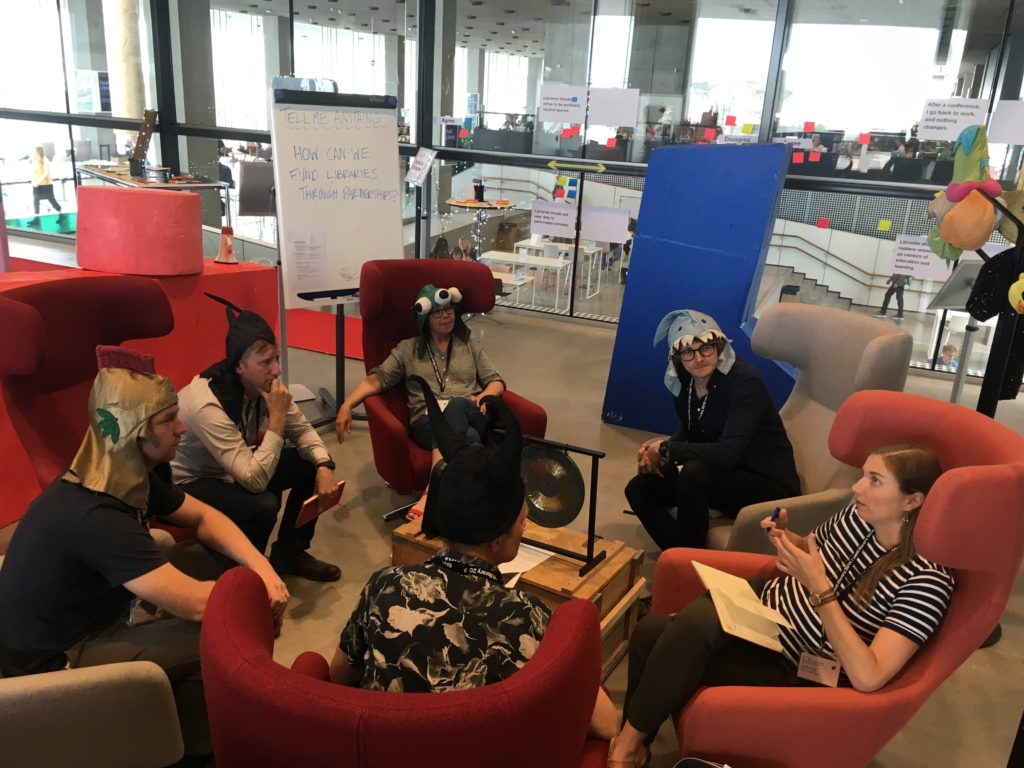
In order to entice participation, it was important to be clear that each conversation was limited to seven minutes.

We were really pleased to see that over the course of the conference people came to use the Lab for a variety of different purposes. We saw lots of 1-1 meetings happening in the space, some follow-on discussions from sessions, and a spontaneous poster session from conference participants who wanted to share their work with others. By the end of the event, the room was covered with flyers, brochures, business cards, ideas, and other artifacts.


And, in the end, like any good party, the Next Library Lab closed by doing karaoke with some of our friends until we got kicked out.
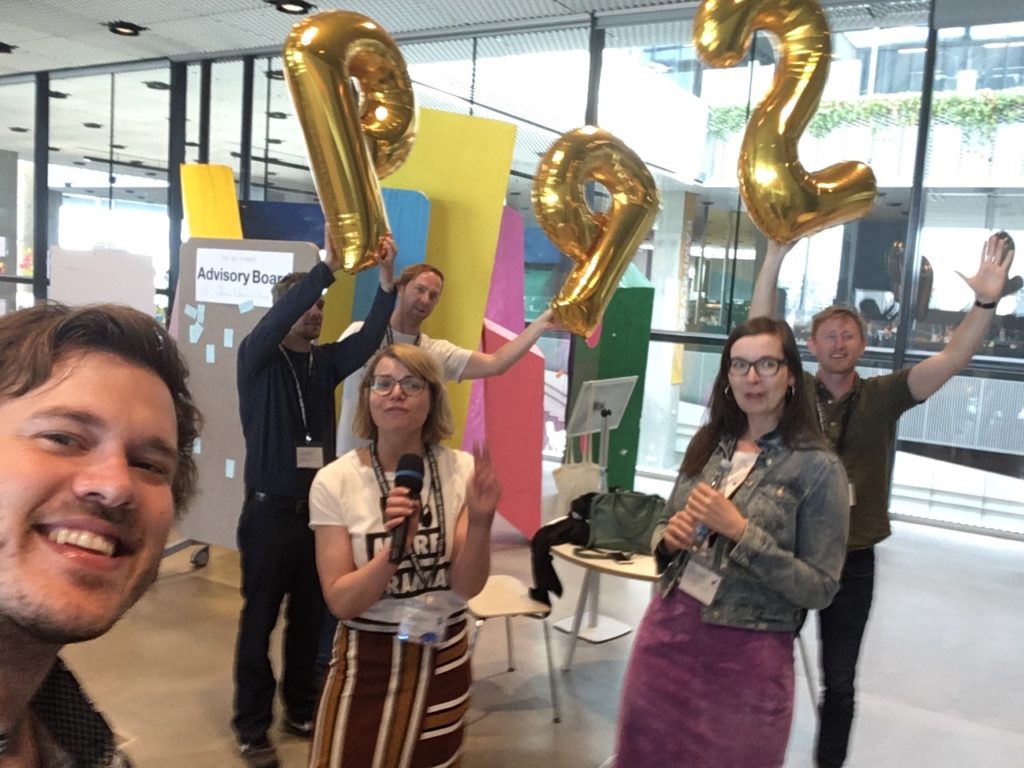
We didn’t spend much time in the Lab talking about learning circles, but we spent a lot of time designing the Lab to feel like learning circles. In terms of sharing our work, this was a far more successful approach than, for instance, if we just had a conference booth where we told people what we did.
I think that the activities we developed for this Lab could be the basis for a fun public-facing event at a library. As such, we’re sharing the instructions for each of the activities, and would be happy to help put something like this on again!